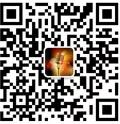精美短文 第51篇:Scientific Theories科学理论
Scientific Theories
In science, a theory is a reasonable explanation of observed events that are related. A theory often involves an imaginary model that helps scientists picture the way an observed event could be produced. A good example of this is found in the kinetic molecular theory, in which gases are pictured as being made up of many small particles that are in constant motion.
A useful theory, in addition to explaining past observations, helps to predict events that have not as yet been observed. After a theory has been publicized, scientists design experiments to test the theory. If observations confirm the scientists’ predictions, the theory is supported.If observations do not confirm the predictions, the scientists must search further. There may be a fault in the experiment, or the theory may have to be revised or rejected.
Science involves imagination and creative thinking as well as collecting information and performing experiments. Facts by themselves are not science. As the mathematician Jules Henri Poincare said,”Science is built with facts just as a house is built with bricks, but a collection of facts cannot be called science any more than a pile of bricks can be called a house.” Most scientists start an investigation by finding out what other scientists have learned about a particular problem. After known facts have been gathered, the scientist comes to the part of the investigation that requires considerable imagination. Possible solutions to the problem are formulated. These possible solutions are called hypotheses.
In a way, any hypothesis is a leap into the unknown. It extends the scientist’s thinking beyond the known facts. The scientist plans experiments, performs calculations, and makes observations to test hypotheses. Without hypothesis, further investigation lacks purpose and direction. When hypotheses are confirmed, they are incorporated into theories.
科学理论
在科学中,理论是对所观察到的相关事件的合理解释。 理论通常包含一个虚构的模型,这个模型帮助科学家构想所观察到的事件是如何发生的。 分子运动理论便是我们能找到的一个很好的例子。 在这个理论中,气体被描绘成由许多不断运动的小颗粒组成。 一个有用的理论,除了能够解释过去的观测,还有助于预测那些未被观测到的事件。 一个理论公开后,科学家们设计实验来检验这个理论。 如果观察证实了科学家的预言,这个理论则得到了验证。 如果观察不能证实科学家的预言,科学家就必须进一步的研究。或许是实验存在错误,或许是这个理论必须被修改或抛弃。 科学家除了收集信息和操作实验外还需要想象能力和创/造性思维。 事实本身并不是科学。 正如数学家乔斯 ·亨利 ·波恩克尔所说:”科学建立在事实之上,就像房子用砖砌成一样。 但事实的收集不能被称作科学,就像一堆砖不能被叫作房子一样。 “多数科学家通过找出别的科学家在一个特定问题上的所知来开始研究。在收集了已知事实之后,科学家开始了研究中需要相当想像力的部分。 他们尔后拟订对这个问题的可行的解决方法。这些可行的解决方式被称为假设。 在某种意义上,任何假设都是向未知的跳跃。它使科学家的思维超越已知事实。科学家计划实验、计算、观测以检验假定。若没有假设,进一步的研究便缺乏目的和方向。 当假设被证实了,就成为理论的一部分。
NSDA“SDcamps”全国英语演讲与辩论大赛(大学组)/SDcamps全国中小学生英语演讲与辩论大会(中小学及幼儿组)/美式辩论赛(以下简称大赛/大会)现诚招全国省市合作伙伴或城市合伙人,共同进行推广NSDA赛事品牌、举办赛事及培训活动、开展素质教育、美式营地项目等多方面合作。
我们希望认同NSDA理念,有赛事组织经验,或有教育资源,特别是有理想有热情的机构或个人一起携手,共同推广NSDA品牌、赛事及素质教育。以机构的形式,或以城市合伙人的方式均可。具体的赛事组织、盈利模式,欢迎电话或微信咨询。
微信:0012133598196
